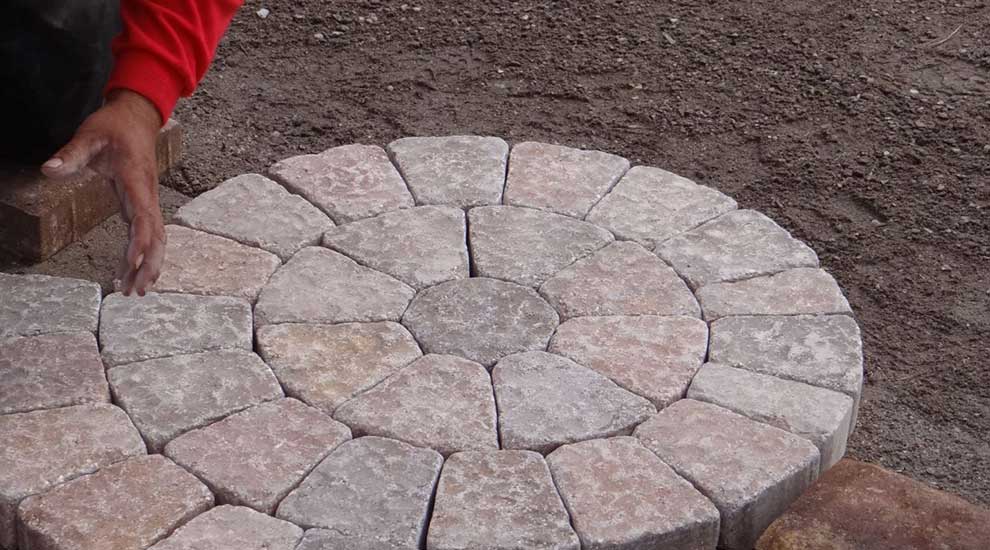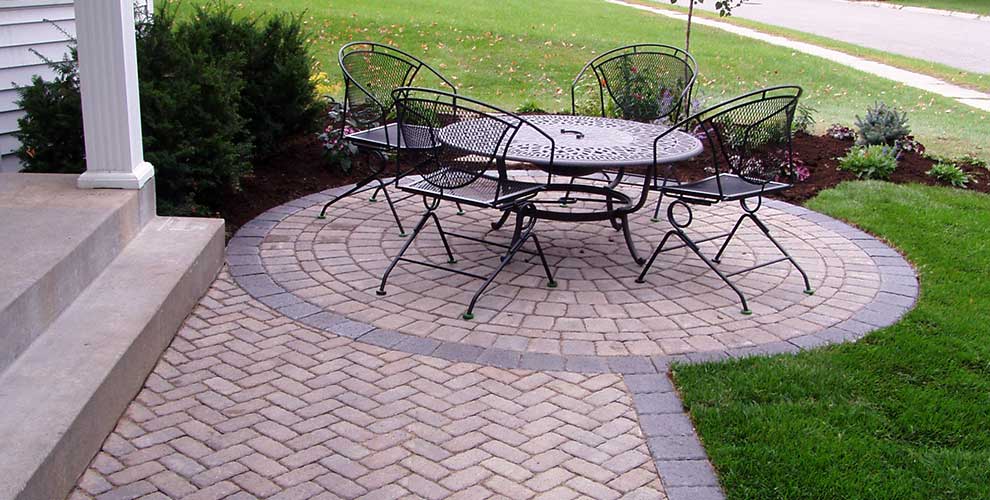Garden paths
Garden paths are a part of the actual construction, an integral part of the garden composition, a zoning tool. Aside from their obvious utility, pathways are necessary to the cohesive integrity of the garden, linking together all garden elements. Appropriate paving materials can transform the garden and add functionality. Types of garden pathways differregarding intended placement, shape, materials and dimensions. Flagstone, paving stone, shale or concrete plates are generally used as materials for main garden pathways. An important dimension to consider is width. A path for two people walking side by side needs to be at least 1,2m wide. Secondary garden paths can be made of wood cuts, gravel or pebbles. 0,5-0,7m wide will be enough. There is a huge variety of colors available.

Image source: Flickr
In difficult for paving places garden paths can be made of wood. It can be garden parquet floor or wood stepping stones. These types of garden paths should be covered with protective coverage, which prevents the surface from being slippery and makes it accident proof.
Stone garden pathways introduce opulence and classical appeal to an outdoor space. They are eco-friendly and long-lasting. Natural stone is nontoxic and doesn’t macerate. Natural stone garden paths are highly popular at the moment, due to their efficiency, beauty and naturalness. Natural stone has always been considered an expensive material.In order to imitate the hue and texture of a natural stone and pay less, ‘imprinted concrete’ technology is used. The surface becomes very similar to natural paving stone, shale plates or flagstone. This material is sturdy, durable, frost and slippery proof. Thanks to this technology we can get a variety of stunning garden walkways for a decent price.
Garden pathways can be made of different materials- natural stone, brick, concrete or pebble. Pavement brick, red or gray, is also a good paving solution. It is easy to pave and possesses decorative qualities, blends well with landscape style.Gravel or pebble are suitable for secondary garden pathways. Such garden paths are time-efficient and easy to operate. The only things required are marking out the borders, preparing the platformfor material spreading and making sure it is spread evenly.
Quality weather-resistant materials are often used as patio pavers. Natural stone, requiring minimum maintenance, long-lasting and frost-proof is a good option. Stone patio pavers made of natural stone will blend really well into patio design.Quartzite or granite are also great patio paving solutions. Paving stone looks quite attractive with natural stone cut plates (shale, sandstone) or with clinker brick.
Pavers
A decisive element in the design of outdoor spaces is the material used for the floor surfaceor the paving. Depending on estimated load, carefully prepared foundation or base is chosen. Foundation materials determine weight restrictions. Efficient drainage and frost-proof qualities are the main requirements.

Image source: Flickr
Crushed stone or concrete are the most popular materials for building garden paths foundations. Concrete foundation provides for uniform and sturdy surface for further paving, without any slopes or shrinkage, for decades. This type of foundation proves quite effective for paths withstanding heavy weights, like car entry paths and parking. When selecting concrete foundation first thing to pay attention to is a damp-proof factor (effective drainageand slopes). After completing garden layout and paving borders being marked out, foundation is ready to be built.
Existing soil is removed to the proper depth, then geotextile fabric and setting bed are installed, the latter being compacted, layer by layer. Then the concrete is being spread in layers of 5-7cm. Edge restraints are installed if necessary. When concrete foundation becomes sturdy, block or tile paving can begin. When block paving, all the elements should be positioned really tight and smooth. Good idea is to lay the tiles beforehand, following the paving pattern, just to make sure there is enough amount of necessary tile forms and sizes. After that cement sand mix is used for tile paving. Checking for the surface being even during the whole process of installation is also an important requirement.

Image source: Flickr
For garden paths and platforms building, which are not intended to support excessive weight, crushed stone foundation is a good solution. The process of installation is almost the same as with concrete foundations. The base is covered with crushed stone, which is then compacted and after having dried out, block paving process begins.
Garden walkways design
When deciding on gardenwalkways design, the following factors should be taken into account: the differences between formal garden paths, characterized by straight lines, right angles and symmetry, and informal landscapepathways, typically curved and meandering. This decision should be made depending on your garden design. When planning garden pathways design, their organizational purpose, which is getting from one point to anotherin the easiest possible way, should be taken into account. Garden pathways can also become a perfect place to have a stroll.

Image source: Flickr
There are quite a few garden pathways ideasfor your garden. To enhance the pathways you can plant group of shrubs or border beds, like begonia, pansy and hosta near them. Landscape pathway design may include arches with climbing herbaceous plants and lianes, being placed on the paths themselves. Sculptures and garden statues are also very strong design elements and great options to style garden pathways.